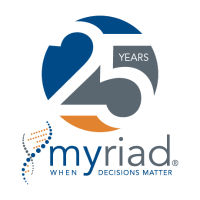Request Demo
Last update 08 May 2025
CXCR4 x gp41
Last update 08 May 2025
Related
1
Drugs associated with CXCR4 x gp41Target |
Mechanism CXCR4 modulators [+1] |
Active Org.- |
Originator Org. |
Active Indication- |
Inactive Indication |
Drug Highest PhasePending |
First Approval Ctry. / Loc.- |
First Approval Date20 Jan 1800 |
100 Clinical Results associated with CXCR4 x gp41
Login to view more data
100 Translational Medicine associated with CXCR4 x gp41
Login to view more data
0 Patents (Medical) associated with CXCR4 x gp41
Login to view more data
180
Literatures (Medical) associated with CXCR4 x gp4128 Sep 2023·Journal of virology
Alterations in gp120 glycans or the gp41 fusion peptide-proximal region modulate the stability of the human immunodeficiency virus (HIV-1) envelope glycoprotein pretriggered conformation.
Article
Author: Sodroski, Joseph G ; Chen, Hung-Ching ; Chiu, Ta-Jung ; Wang, Qian ; Smith Iii, Amos B ; Nguyen, Hanh T ; Zhang, Zhiqing
28 Mar 2023·Proceedings of the National Academy of SciencesQ1 · CROSS-FIELD
Indoline CD4-mimetic compounds mediate potent and broad HIV-1 inhibition and sensitization to antibody-dependent cellular cytotoxicity
Q1 · CROSS-FIELD
Article
Author: Anang, Saumya ; Yang, Derek ; Finzi, Andrés ; Sodroski, Joseph G. ; Mohammadi, Mohammadjavad ; Richter, Hannah ; Abrams, Cameron ; Bourassa, Catherine ; Madani, Navid ; Hendrickson, Wayne A. ; Fritschi, Christopher J. ; Seaman, Michael S. ; Smith, Amos B. ; Richard, Jonathan ; Chen, Hung-Ching ; Severino, Kenny T. ; Chiu, Ta-Jung ; Gong, Zhen
01 Jan 2021·Acta virologicaQ4 · MEDICINE
Specific synonymous mutations tightly correlate with HIV-1 co-receptor usage and differentially affect the secondary structure of HIV-1 Env RNA
Q4 · MEDICINE
Article
Author: Aquaro, Stefano ; Dimonte, Salvatore ; Pellegrino, Michele ; Fabeni, Lavinia
Analysis
Perform a panoramic analysis of this field.
login
or

AI Agents Built for Biopharma Breakthroughs
Accelerate discovery. Empower decisions. Transform outcomes.
Get started for free today!
Accelerate Strategic R&D decision making with Synapse, PatSnap’s AI-powered Connected Innovation Intelligence Platform Built for Life Sciences Professionals.
Start your data trial now!
Synapse data is also accessible to external entities via APIs or data packages. Empower better decisions with the latest in pharmaceutical intelligence.
Bio
Bio Sequences Search & Analysis
Sign up for free
Chemical
Chemical Structures Search & Analysis
Sign up for free
